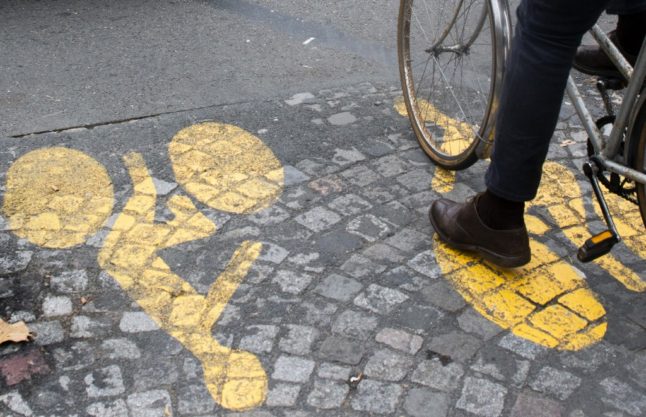In June, Mayor AnneHidalgo’s office published their list of 12 rules, which the town council voted in favour of in July and which have now into effect.
- Bicycles, cars and other two-wheeled vehicles must respect pedestrian priority
- Everyone should be vigilant and pay attention to the most vulnerable people (eg, the elderly, children and those with disabilities) as well as those with specific needs
- Motorised two-wheeled vehicles, scooters and bicycles are not permitted to drive on sidewalks
- Motorists should not encroach on bus lanes, bike racks and cycle paths
- Do not exceed the authorised speed and obey the traffic lights and signs
- Pedestrians should wait before entering a congested intersection
- Only park your vehicle in authorised spaces
- Don’t drink before operating a car, bicycle or other two-wheeled vehicle
- When opening the door of a car, be sure to look before. Open the door with your right hand instead of your left.
- Sound the horn in case of danger
- Pedestrians should only cross the street in pedestrian crossings
- Pedestrians should look both ways before crossing the street
In addition to these rules, the city promised that children in Paris schools would also learn road safety during courses on how to ride a bicycle.
According to the existing code de la route, cyclists can be fined up to €35 for changing direction without warning or having a passenger on the bike who is not in an attached seat.
Cyclists also risk fines of up to €135 when using a phone or wearing headphones while biking, failing to respect the right of way for pedestrians, or riding under the influence of alcohol or drugs.
Paris’ mayor Anne Hidalgo, who was first elected in 2014, campaigned on promises to turn Paris into a greener city and has prioritised cycle-friendly measures.
Hidalgo’s bicycle plans have been successful in bringing more cyclists to Paris’ streets – when comparing the year following the launch Hidalgo’s first ‘plan vélo’ in 2016 with 2022, the average number of cyclists on bicycle paths in Paris per day rose from 702 to 1,870.
But the increase in the number of cyclists has not been without problems – particularly among pedestrians who say they worry about their safety due to the large numbers of cyclists, not all of whom follow the rules of the road.
READ MORE: How close is Paris to its goal of being a 100% cycle-friendly city?
In an attempt to juggle the interests of cyclists, pedestrians and motorists, Hidalgo announced in January that she would put forward a ‘code de la rue’ (street code) to better ensure safety on the city’s streets.
This is in addition to France’s existing code de la route (highway code) which provides all the laws and statues related to road safety.
While the code de la route is primarily focused on motorists and cars, it does contain provisions for cyclists, such as prohibitions on wearing headphones or using a hand-held telephone while cycling.
But many city residents were calling for additional steps to prevent accidents and incivility on Paris’ roads, and in response Hidalgo’s team came up with 12 major rules to improve cohabitation amongst all groups on the capital’s streets.
The situation on the street
Pedestrians are not the only ones who are frustrated – some cyclists feel that neither pedestrians nor motorists respect the rules of the road.
In October 2022, French daily Le Parisien spoke to cyclist Cécile, who said she recently had an accident and fell because a car had failed to respect the right of way. “I had to divert my bike to avoid an accident with the car,” she told Le Parisien.
Others referenced pedestrians who fail to pay attention or stare at their phones, “I recently had an accident where I hit someone who was crossing the street without looking,” recounted one cyclist, Chloé, to Le Parisien.
Response from Parisians
For some Parisians, the new code de la rue does not represent a strong enough response. The group ‘Changer Paris’ tweeted a parody video, ostensibly making fun of the 12 rules for being too obvious.
Oui-Oui et le #surmulot devraient s'inscrire au Code de la rue d'#AnneHidalgo👇 #ConseildeParis pic.twitter.com/ZLk4TQLFqJ
— Changer Paris (@GpeChangerParis) July 6, 2023
In a recent Op-Ed for French daily Le Figaro, writer Vincent Roy called the code de la rue “Anne Hidalgo’s latest fad” and argued that the city’s resources would be better spent simply enforcing the rules of the existing code de la route, particularly for cyclists.
The city also promised to increase the number of tickets handed out by ‘video verification’ (radar) and that municipal police would take on more targeted checks based on different themes of the above rules.



 Please whitelist us to continue reading.
Please whitelist us to continue reading.
Member comments